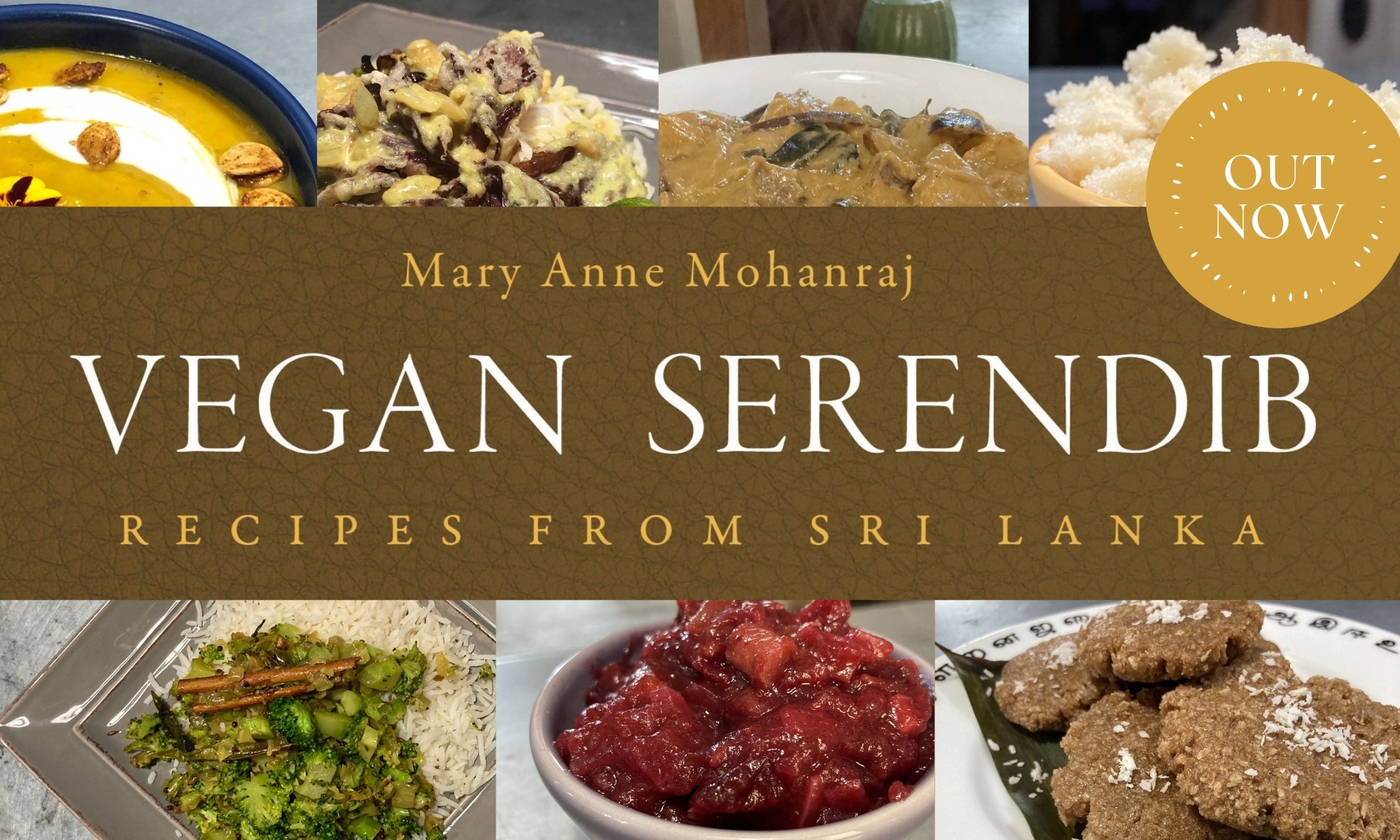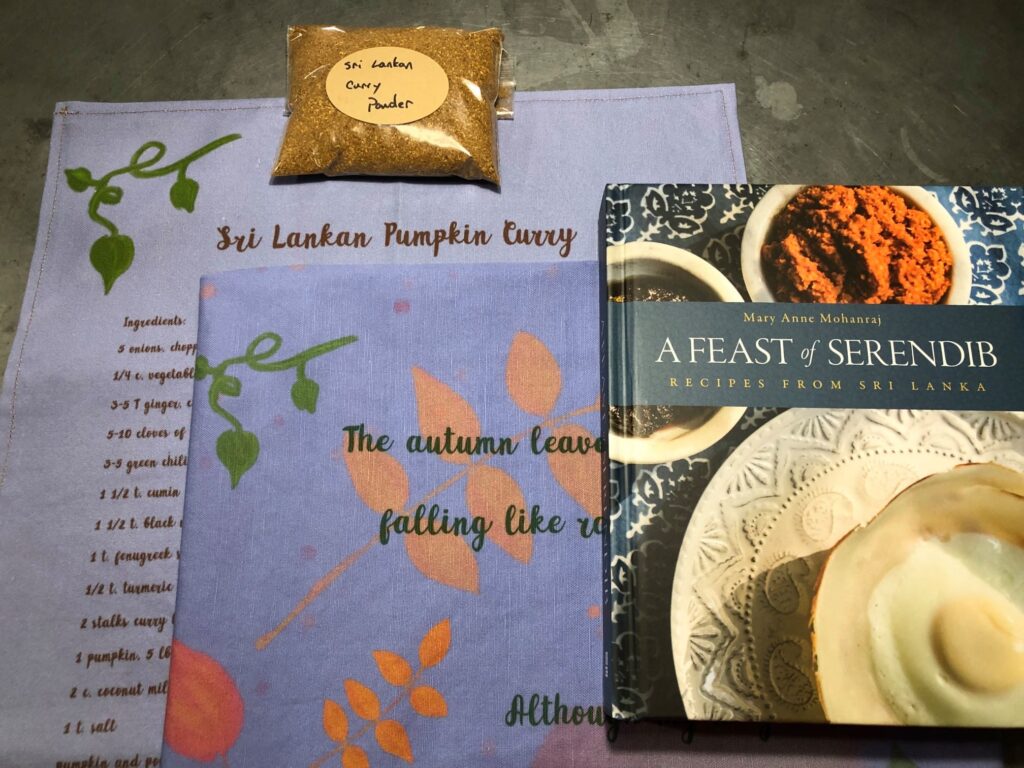Cranberry sauce done, playing with final touches on decorating the dragons. I think I like the pink & gold effect best on these, though a frosty white ice dragon is also good. ![]()
Picturesque
Confirming Deliciousness
The BIG Holiday Package
Pongee
 Happy Pongal! Pongal is a four-day-long harvest festival celebrated in Tamil Nadu and Sri Lanka (this year it’s Tues Jan 15 – Fri Jan 18) — when crops like rice are harvested. Yes, it’s a little goofy celebrating it in Chicago in midwinter, but any excuse to celebrate, right?
Happy Pongal! Pongal is a four-day-long harvest festival celebrated in Tamil Nadu and Sri Lanka (this year it’s Tues Jan 15 – Fri Jan 18) — when crops like rice are harvested. Yes, it’s a little goofy celebrating it in Chicago in midwinter, but any excuse to celebrate, right?
I haven’t made pongal (rice & lentil porridge) before, but I think it came out pretty well. A quick, simple, one-pot dish, packed with protein, that would be even better accompanied by a nice curry –– eggplant, perhaps? Coconut chutney and sambar are traditional accompaniments.
Pongal
20 minutes, serves 4
1 c. rice
1 c. moong dal
4 c. water
1/2 t. salt
2 T butter or ghee
1/2 c. cashews
1/2 c. sultanas
1 t. cumin seeds
8-12 fresh curry leaves
1-2 green chilies, chopped, optional
1. Add rice, dal, water, and salt to a pot. Bring to a boil, cover, and let simmer 15-20 minutes, until cooked.

2. While rice is cooking, heat butter or ghee, sauté cashews, stirring, until golden. Add cumin seeds, sultanas, curry leaves, and green chili if using, stirring for a few more minutes. Mix into cooked rice & lentils and serve hot.
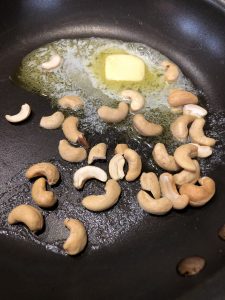
Other standard ingredients: chopped ginger, pinch of asafoetida, turmeric, black peppercorns (whole or crushed).
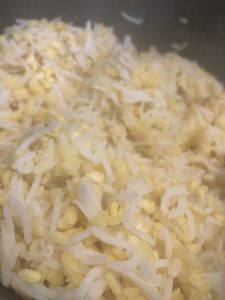

Sweet & Spicy Brussels Sprouts with Pomegranate Seeds
 People ask a lot how I do all this stuff, so I must periodically make clear that my life wouldn’t function if Kevin couldn’t feed himself and the kids as needed. Sometimes he’s cooking from scratch, and making well-balanced meals or fresh-baked bread; sometimes he’s throwing some frozen peas on the plate and calling it a day. That’s parenting for both of us around here. But I can go out of the country for a week, or spend all weekend at holiday fairs, and I know that as long as Kev’s not cross-scheduled (we do have to be a little careful about that), he’ll get the family fed. It’s not nothing.
People ask a lot how I do all this stuff, so I must periodically make clear that my life wouldn’t function if Kevin couldn’t feed himself and the kids as needed. Sometimes he’s cooking from scratch, and making well-balanced meals or fresh-baked bread; sometimes he’s throwing some frozen peas on the plate and calling it a day. That’s parenting for both of us around here. But I can go out of the country for a week, or spend all weekend at holiday fairs, and I know that as long as Kev’s not cross-scheduled (we do have to be a little careful about that), he’ll get the family fed. It’s not nothing.Stock
“But why are you making stock?”
It was a fair question — Kevin had asked what I planned to do today, on New Year’s Eve, and I said, ‘make stock,’ and that was confusing because while we cook with stock all the time, we generally just buy it ready-made.

But it made sense to me — I was recovering from a winter sickness, craving soup, and supposedly making stock the old-fashioned way, with all the bones in, actually was good for your immune system, or so I’d read somewhere, at some point. And more than that, it felt right for New Year’s Eve, to head into the next year using up the bones of the old, making something good and fresh and strong for going on with.
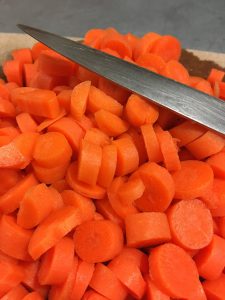
It was going to be a slightly unusual stock, because our grocery delivery had failed to materialize, so no celery, and no wings I’d ordered to supplement the chicken breast I had on hand in the freezer. But it turned out that a friend had stored a turkey neck in our freezer (long story), so once she gave us her blessing, that joined the chicken breasts in the pot. I never liked celery anyway, so even though it’s classic for stock, I was pretty sure I could get along without it.
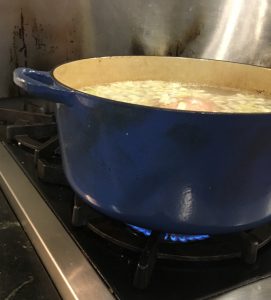
I cleaned the kitchen too, with Kevin lending me a hand when I got tired, because in my family, it’s traditional to start the New Year with a clean house. I didn’t quite manage the clean house (sorry, Amma), but a clean kitchen is the most important part, I think. Heart of the home.

And now the stock is simmering, and Kevin and I have poured out glasses of the 25-year-old vintage port that he got us for our 25th anniversary — which was several months ago, but we were having a party then, and it was a little busy, so we’ve only gotten around to opening it now. It is tasty.
He’s putting the children to bed, and then we will curl up in bed ourselves and watch The Marvelous Mrs. Maisel with our port and chocolate cupcakes. In an hour and a half or so, the stock will be simmered sufficiently; I’ll chill it overnight in the fridge, and then skim off the fat and scum from the top in the morning, so it’ll be all ready for soup experiments, or whatever else the new year brings us.
Wishing you a good skimmer for ridding yourself of last year’s scum.
More importantly, wishing you plenty of rich, hearty soup — or whatever else you find nutritious and sustaining and delicious — to carry you through the new year.
Adjusting for Taste
My in-laws have been visiting for a few days, so we’ve been cooking for a larger array of palates than usual. Holiday cooking for a large group is a little like being on a game show — can you feed all of these people in a way that makes everyone happy? Can you do it for three meals in a row? How about for three days in a row? (They did go out for brunch yesterday, which helped!)
It’s already somewhat challenging cooking for just me, Kevin, and the kids — Kev and I both love spicy food, but he doesn’t eat mushrooms (sad) or fish (tragic). The kids mostly don’t eat spicy food, though we’re working on that, and their appreciation for vegetables is still fairly limited (but improving). With the addition of the relatives came more restrictions — my mother-in-law doesn’t like beets or cilantro (but my father-in-law does), my sister-in-law doesn’t do spicy, and her daughters aren’t big fans of spicy either. Etc. and so on.
All of which means that we could just stick to mac-and-cheese to feed everyone, but after three days of that, I just can’t take it anymore. I like pasta as much as the next person, but before too long, I start to crave South Asian food. So last night, we did our best to cook South Asian food that everyone would eat.
Having several dishes meant that we could expect people to skip one or two and still have plenty to eat. I left out the chili powder on the ginger-garlic chicken, and that went well; I left out the mustard and cumin seeds on the vegetables, because I wasn’t sure the kids wouldn’t find them suspicious, and I used onion powder instead of onions, because various people don’t like pieces of onion. We just put one jalapeño in the cabbage, instead of three Thai green chilies, and we reduced the chilies in the beets similarly. And I made a cucumber raita, just in case it was still too spicy!
I wouldn’t say it was a complete success — despite my children’s urgings that the chicken was really good, their cousins refused to try it! But I think the adults were mostly fine, at least, and everyone was fed sufficiently, and I got a little of the food I love and need — the flavors were milder than normal, but still in the right continent, at least. Good enough!





Seeni Sambol Appetizer Experiment #4: Patties!
And we have a winner — seeni sambol & egg patties. They are so, so good. I took our standard Sri Lankan patty dough, rolled it thin, cut circles, all the way you would for typical chicken patties.


I did some extra small, to see how they’d come out, and they were very cute when fried, and a nice little snack — I ate some on the flight today, and they were lovely with tea at room temperature. (I also tried baking one, and it was, I’m afraid, pretty eh. They want frying.)
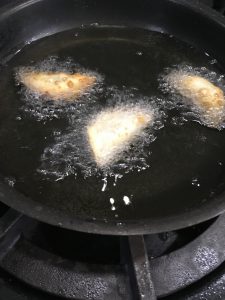

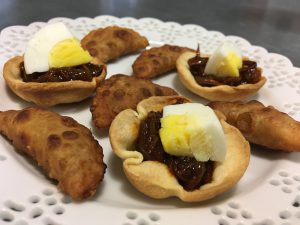
But when they’re that small, there isn’t room for egg, and I wanted the unctuousness of the egg balancing the intensity of the seeni sambol. So I went back up to typical patty size (which is just fine for a tea or cocktail party anyway), filled it with seeni sambol and a sixteenth of a boiled egg (you could do an eighth, but I wouldn’t recommend anything bigger), folded it and crimped it up. (I tried making one that was round, which was a fun experiment, but I didn’t like it as well as the classic patty shape.)

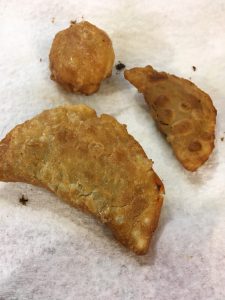
Then, for a little added color and zing, I brushed it all with an egg wash, and then deep-fried it. It. was. perfect. I’ll write the recipe up properly the next time I make it; all the experimenting meant that I wasn’t up for measuring everything until I knew which was the winning approach. Maybe for New Year’s!

But in the meantime, if you know how to make patties already, it’s very easy to adapt for seeni sambol. Leave out the Maldive fish if you like, and your vegetarian friends will thank you for this delectable little snack.
Seeni Sambol Appetizer Experiment #2: Buns
As we discussed possible containers for the seeni sambol, Kevin advocated for buns — which, fair enough, is actually traditional. Seeni sambol buns can be found sold in roadside stands across Sri Lanka, so obviously, people like them.
But there was a problem — those buns were too big for cocktail / tea party. Could I make mini buns instead?

The answer was yes — I made the buns half-size (which, if you use my mas paan recipe, means that you’ll end up with 60 little buns), which was just big enough that you could dollop a teaspoon of seeni sambol and an eighth of a hard-boiled egg into the center, before closing them up.
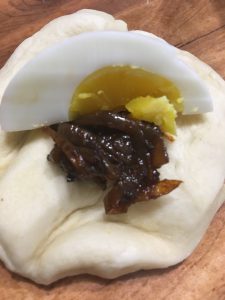
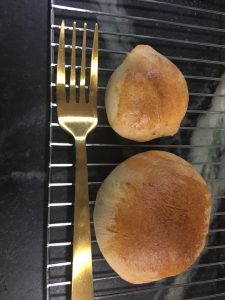
The end result was just fine, I’d say, and I would be happy to serve them to people. This would be a great option for taking them on the road as a snack, as they’re nicely closed up and will keep well. You should even be able to freeze them, I think, though I haven’t tried that, and I’m not positive what the cooked egg would do. I also tried slashing the top in a criss-cross pattern, which makes for a more interesting presentation for a cocktail / tea, and lets you see a little bit of the bun.
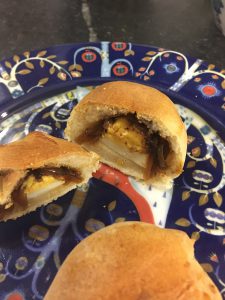

Overall, I’d grade these as a B+.
But I was pretty sure I could do better…
